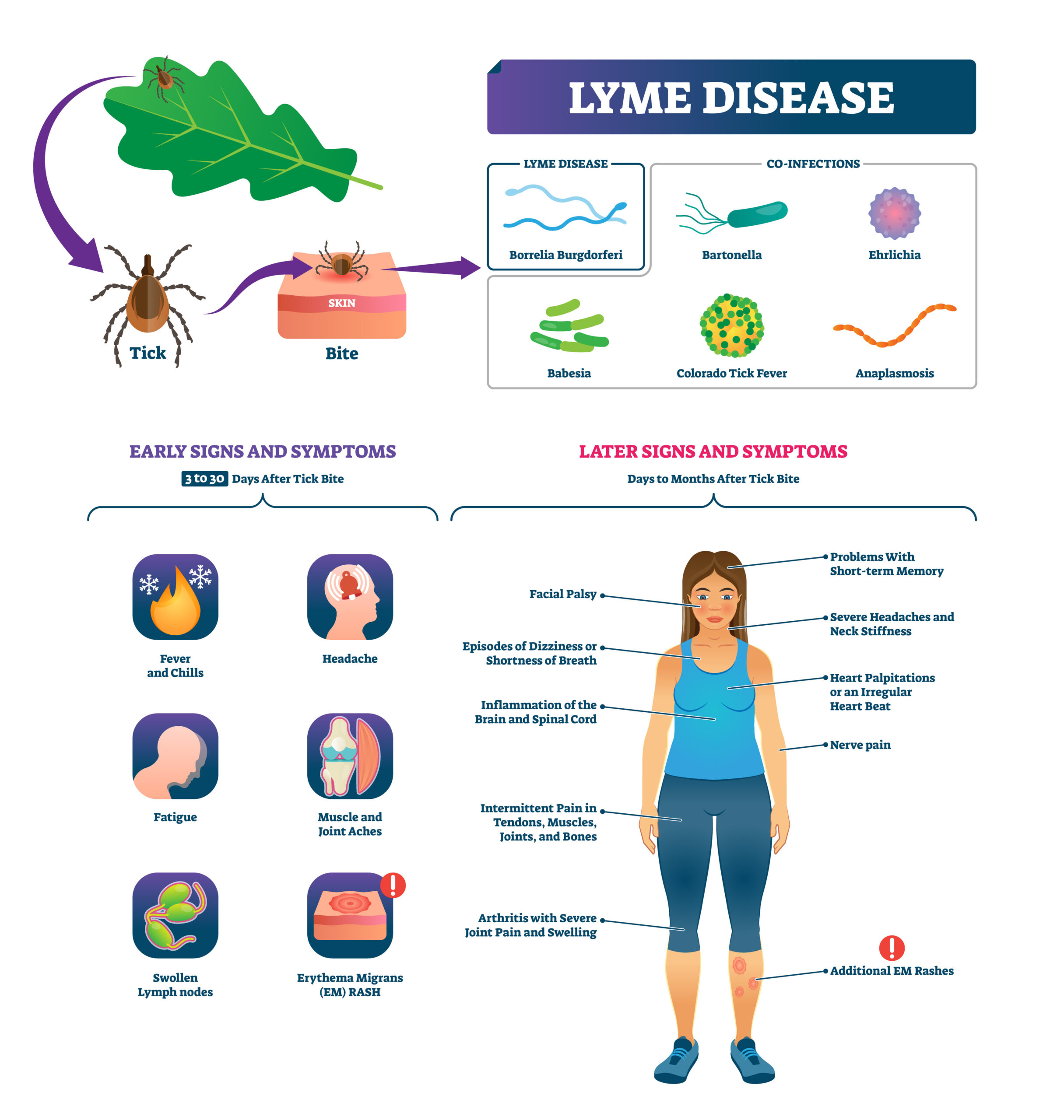What are the symptoms of Lyme disease?
Published on 29 April, 2022

Lyme Disease is caused by the bacterium Borrelia burgdorferi, transmitted to humans through the bite of an infected tick.
Lyme disease may be categorised into three stages:
Stage I: Early-stage Lyme disease
- a slowly expanding erythema migrans rash in about 60% of cases;
- headache;
- flu-like symptoms: temperature, chills and neck stiffness;
- joint and muscle pain;
- swollen lymph glands;
- fatigue.
Stage II: Early disseminated Lyme disease
If Lyme disease is left untreated, or is not treated early on, symptoms may include:
- inflammation: joint pain and swelling;
- neurological: e.g. tingling, numbness, neuropathy, memory problems, difficulty concentrating;
- cardiac, e.g., myocarditis, pericarditis, bundle branch block, heart rhythm disturbances.
Stage III: Late disseminated Lyme disease
Later disease may be characterised by:
- large-joint oligoarthritis in over 50% of cases;
- encephalopathy;
- peripheral polyneuropathy;
- aphasia/hemiplegia (rarely);
- seizures;
- anxiety attacks;
- psychosis and hallucinations have all also been recorded.
Laboratory testing
If Lyme disease is suspected AONM ArminLabs offers a range of Laboratory tests – contact info@aonm.org for more information, or visit www.aomm.org
Complete the Lyme Questionnaire and Coinfection Checklist online here
Forward your checklist results to your therapist, or email to laboratories@aonm.org

